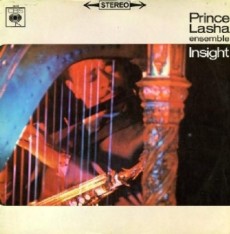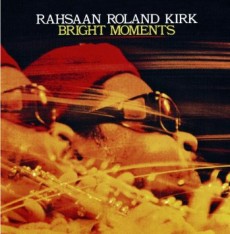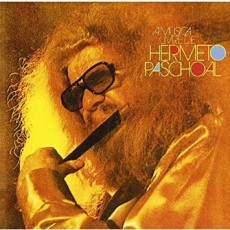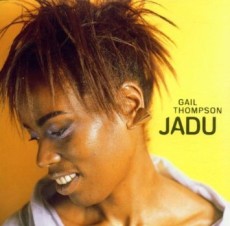
Daily Dose Of Jazz…
Jeremy Steig was born September 23, 1942 in New York City in Greenwich Village. He studied flute in his childhood but at nineteen a motorcycle accident left him paralyzed on side and for some years afterward, he played the flute with the help of a special mouthpiece.
Starting in mainstream jazz Jeremy recorded with Bill Evans and Denny Zeitlin and then became an early force in the jazz-rock fusion experiments of the late Sixties and early 70s. He record Energy with Warren Bernhardt, Eddie Gomez and Adrian Guiliary, with a reissue of additional material featuring Jan Hammer and Gomez.
He has played flute on Peter Walker’s Rainy Day Raga, has been sampled by the Beastie Boys, performed the role of The Pied Piper in the film Shrek Forever After. He has recorded 29 albums as a leader and has performed and/or recorded with Walter Bishop Jr., Tommy Bolin, Hank Crawford, Art, Farmer, Urbie Green, Idris Muhammad, Lalo Schifrin, Johnny Winter and Paul Winter.
Flautist Jeremy Steig, who plays the entire battery of the flute family of instruments from piccolo to bass flute continues to perform, record, compose and tour.
More Posts: flute

Daily Dose Of Jazz..
William B. Lawsha, better known as Prince Lasha (pronounced “La-shay“), was born on September 10, 1929 in Fort Worth, Texas. He came of age studying and performing alongside fellow I.M. Terrell High School students John Carter, Ornette Coleman, Charles Moffett and Dewey Redman.
Lasha moved to California during the 1950s and by the Sixties he was active in the burgeoning free jazz movement, of which Ornette Coleman was a pioneer. Moving to Europe in 1966 his musical base was in Kensington, London and his album Insight was recorded, featuring local musicians including Bruce Cale, Dave Willis, Jeff Clyne, Rick Laird, Joe Oliver, David Snell, Mike Carr, Stan Tracey, John Mumford and Chris Bateson.
Prince returned to the U.S. in 1967, worked closely with saxophonist Sonny Simmons, recording two albums, The Cry and Firebirds for Contemporary Records. The latter album received five stars and an AMG Album Pick at Allmusic. He also appeared on two recordings with Eric Dolphy, Iron Man and Conversations, and Illumination! with the Elvin Jones/Jimmy Garrison Sextet featuring McCoy Tyner.
In the 1970s, Lasha and Simmons made additional recordings under the name Firebirds. In 2005, he recorded the album The Mystery of Prince Lasha with the Odean Pope Trio. He also recorded with Gene Ammons and Michael White.
Alto saxophonist, flautist and clarinetist Prince Lasha passed away on December 12, 2008 in Oakland, California.

Daily Dose Of Jazz…
Rahsaan Roland Kirk was born Ronald Theodore Kirk on August 7, 1935 in Coumbus, Ohio and grew up in the neighborhood called Flytown. He felt compelled by a dream to transpose two letters in his first name to make Roland. He became blind at an early age as a result of poor medical treatment. In 1970 he added “Rahsaan” to his name after hearing it in a dream.
Rahsaan preferred to lead his own bands and rarely did he perform as a sideman, although he did record lead flute and solo on Soul Bossa Nova with arranger Quincy Jones in 1964, as well as drummer Roy Haynes and had notable stints with bassist Charles Mingus. His playing was generally rooted in soul jazz or hard bop but his knowledge of jazz gave him the ability to draw from ragtime to swing to free jazz. In additional to classical influences he borrowed elements from composers like Smokey Robinson and Burt Bacharach, Duke Ellington and John Coltrane.
His main instrument was the tenor saxophone and two obscure saxophones: the stritch, a straight alto sax lacking the instrument’s characteristic upturned bell and a manzello, a modified saxello soprano sax, with a larger, upturned bell. Kirk modified these instruments himself to accommodate his simultaneous playing technique. He also played flute, clarinet, harmonica, English horn, recorder and trumpet, as well as incorporating an interesting array of common items such as garden hose, alarm clocks and sirens.
At times Rahsaan would play a number of these horns at once, harmonizing with himself, or sustain a note for lengthy durations by using circular breathing or play the rare, seldom heard nose flute. Many of Kirk’s instruments were exotic or homemade, but even while playing two or three saxophones at once the music was intricate, powerful jazz with a strong feel for the blues. Politically outspoken, he would often talk about issues of the day in between songs at his concerts, such as Black history and the civil rights movement and lacing them with satire and humor. According to comedian Jay Leno, when he toured with him as his opening act, Kirk would introduce him by saying, “I want to introduce a young brother who knows the black experience and knows all about the white devils… Please welcome Jay Leno!”
In 1975, Kirk suffered a major stroke that led to partial paralysis of one side of his body. However, he continued to perform and record, modifying his instruments to enable him to play with one arm. He died from a second stroke on December 5, 1977 after performing in the Frangipani Room of the Indiana University Student Union in Bloomington, Indiana.
His influence went well beyond jazz to include such rock musicians as Jimi Hendrix, Ian Anderson of Jethro Tull, Eric Burdon and War, T.K. Kirk, Hope Clayburn, Jonny Greenwood and Ramon Lopez, all who idolized or paid tribute to, and David Jackson, George Braith and Dick Heckstall-Smith who took to playing multiple saxophones, and Steve Turre, Courtney Pine who utilizing his circular breathing during play. He left to us nearly four-dozen albums as a leader and another eleven with aforementioned Jones, Mingus and Haynes, and Tubby Hayes, Tommy Peltier, Jaki Byard and Les McCann.

Daily Dose Of Jazz…
Hermeto Pascoal was born an albino on June 22, 1936 in Lagoa da Canoa, Alagoas, Brazil at a time when there was no electricity. He learned the accordion from his father and practiced for hours as his condition of birth did not allow him to work the fields.
Hermeto’s career began in 1964 with appearances on several Brazilian recordings alongside relatively unknown groups that included Edu Lobo, Elis Regina and Cesar Camargo Mariano, establishing widely influential new directions in post-bossa Brazilian jazz.
By 1966 he was playing in the Sambrasa Trio with Airto Moriera and Humberto Clayber releasing one album Em Som Maior. Then he and Airto joined Trio Novo and in 1967 renamed the group Quarteto Novo and released an album that launched the careers of Pascoal and Moreira. Pascoal would then go on to join the multi-faceted group Brazilian Octopus.
Pascoal initially caught the international public’s attention with an appearance on Miles Davis’s 1971 album Live-Evil, which featured him on three pieces he composed. Later collaborations involved fellow Brazilian musicians Airto and Flora Purim. From the late 1970s onward he has mostly led his own groups, that have included bassist Itibere Zwarg, pianist Jvino Santos-Neto and percussionists Nene, Pernambuco and Zabele.
Known as o Bruxo (the Sorcerer), Hermeto often makes music with unconventional objects such as teapots, children’s toys, and animals, as well as keyboards, button accordion, melodica, saxophone, guitar, flute, voice, various brass and folkloric instruments. Folk music from rural Brazil is another important influence in his work.
Between 1996 and 1997, Pascoal worked on a book project called the Calendário do Som, that contains a song for every day of the year, including 29 February, so that everyone would have a song for his or her birthday. He continues to perform, record and tour.
More Posts: accordion,flute,guitar,keyboard,melodica,saxophone,vocal

Daily Dose Of Jazz…
Gail Thompson was born on June 15, 1958 in London, England. Coming from a musical family as a child she learned to play the clarinet. At 16 she was playing baritone saxophone as a member of the National Youth Jazz Orchestra and founded her own bands.
She went on to become a founding member alongside with Courtney Pine of the British band Jazz Warriors. She played briefly with Art Blakey becoming the second female member of the Jazz Messengers along with Joanne Brackeen.
In 1986, she led the big band of Charlie Watts and then founded her first big band Formation Gail Force, for which she also composed music. Thompson’s music is inspired by Africa rhythms and hard bop bringing her stylistically close to the big band sounds of Abdullah Ibrahim and Quincy Jones.
In 1994, her debut recording session and album as a leader came with Gail Force. One year later as a product of a journey through the African continent, she recorded live in Duisburg the album Jazz Africa for Enja Records with Harry Beckett, Claude Deppa, Jerry Underwood and Patrick Hartley. After a stay in the Australian Queensland in 1999 she recorded the album Jadu, referencing Jazz Africa Down Under with bassist Mario Castronari.
For health reasons, flutist, saxophonist, composer and arranger of modern jazz Gail Thompson had to quit playing the saxophone but she put her energies towards focusing on music education activities. In 2003 she organized the Afro-European Women’s Big Band Femmes Noires , who performs her compositions.


